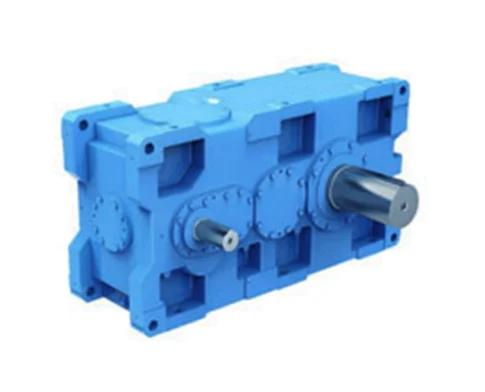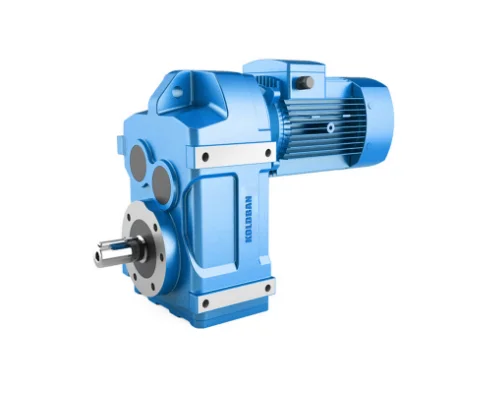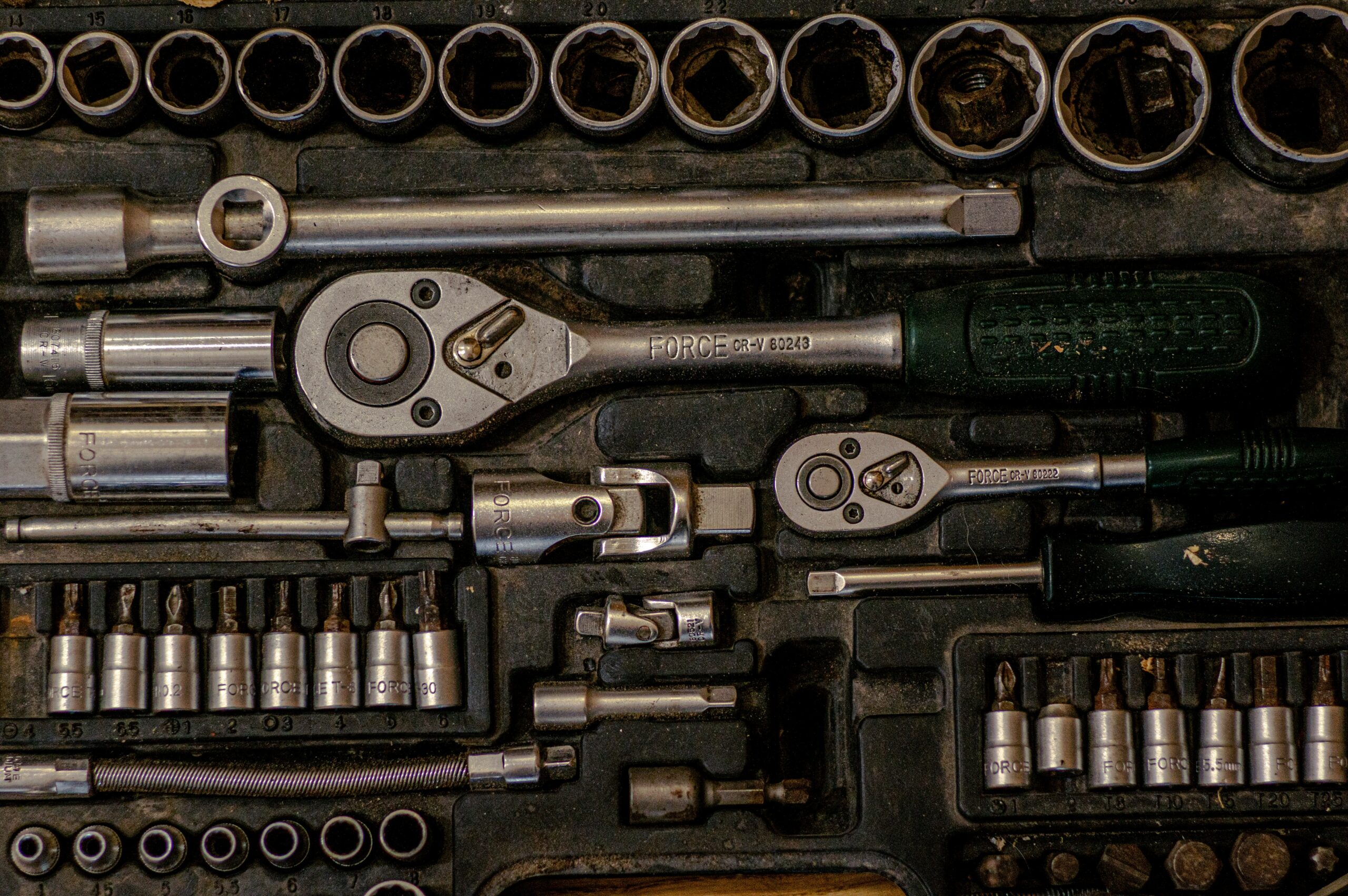As gearboxes and gear motors are indispensable in the complex world of industry and automation, their significance cannot be overstated. They operate inconspicuously, carrying out critical tasks in the background of automation while ensuring that machinery operates with accuracy and effectiveness. An exemplary illustration of such pivotal components is present in the HSBW Series Gearmotors, a collection that symbolizes the apex of innovation in transmission technology and gear motor design. Prior to delving into the intricacies of these systems, it is imperative to clarify the fundamental notions of a gearbox and gear motors.
Define a Gearbox
A gearbox is a mechanical enclosure where a sophisticated configuration of gears is housed. Its principal purpose is to facilitate the transfer of power between devices, enabling the adjustment of torque and speed in accordance with the requirements of the apparatus. As part of the HSBW series, the H Series Helical Geared Motor exemplifies the silent operation and high load capacity of helical gearboxes. Likewise, the B Series Helical-Bevel Geared Motor serves as a prime illustration of how the integration of helical and bevel gears can yield durability and efficiency. As a result, it is highly suitable for tasks that require angular transmission.
Housing, input and output shafts, bearings, gear sets, and fundamental components comprise the gearbox. Every individual component is of the utmost importance in guaranteeing the consistent and uninterrupted functioning of the transmission across a range of conditions.

An Overview of Gear Motors
The outcome of directly coupling a transmission with a motor is a gear motor. Gear motors are fundamental in numerous mechanical and industrial applications due to their ability to deliver high torque at low velocities, a characteristic that is critical for a wide range of processes. The amalgamation of the transmission and motor results in a solution that is more compact, efficient, and economical. From the HSBW series, the S Series Parallel Shaft-Helical Geared Motor and the W Series Helical-Worm Geared Motor exemplify gear motors that are well-suited for a variety of industrial applications due to their variable torque outputs and velocities.
The merits of gear motors become especially apparent in their capacity to manage substantial load requirements while maintaining efficiency. Their purpose is to distribute force among gears, thereby mitigating machinery tension and prolonging the equipment’s operational lifespan.
The HSBW Gearmotor Series
Upon closer inspection, the HSBW Series Gearmotors serve as evidence of the progress made in the field of transmission and gear motor technology. This series comprises various categories of gear motors, each distinguished by its own power capacities, ratio ranges, and output torque capabilities. The H12–H163 type, for example, provides a power capacity spanning from 0.12 to 160 KW and a ratio range of 1.39 to 27,001, thereby accommodating a vast array of industrial needs.
It is astonishing how versatile these gear motors are. Due to its high power capacity and large ratio, the S32–S153 type is designed for applications requiring strict control and accuracy. On the other hand, the B33–B183 model is designed to handle heavier loads and is capable of producing a significant torque output spanning from 10 to 62,800 Nm. This characteristic renders it well-suited for industries that encounter elevated resistance and weight.

Implementations and Sectors
The range of industries in which gearboxes and gear motors are utilized mirrors their practical applications. The HSBW Series Gearmotors are highly suitable for a wide range of industries due to their durable construction and diverse set of features. The packaging lines rely on the accuracy and productivity of these gear motors to guarantee that products are handled with care and appropriately packaged. They make a critical contribution to the efficient operation of sorting and conveyor systems within transportation systems, which are essential for the dependable movement of products from location A to location B.
When it comes to hoisting, gear motors such as the B Series Helical-Bevel Geared Motor guarantee precise control over the elevation and descent of large loads, which is critical for ensuring safety and efficiency in the shipping and construction sectors. In mixing applications, whether for pharmaceuticals or food and beverages, gear motors such as the H Series Helical Geared Motor ensure a flawless blend on each occasion by supplying consistent rotational velocities.
The HSBW Series Gearmotors find application in various sectors, including steel, power, port, cement, chemical, and tobacco. An example of this can be seen in the steel industry, where the continuous operation under high-load conditions is critical for adhering to production schedules and requires gear motors to be dependable and durable. The power sector benefits from the meticulous management of apparatus responsible for electricity generation and distribution, made possible by the precise control provided by gear motors. This ensures both efficiency and safety.
Selecting the Appropriate Gearbox or Gear Motor
For optimal operational results, it is vital to choose the appropriate transmission or gear motor, such as those found in the HSBW Series. One of the most important aspects to contemplate is the power requirement, which quantifies the amount of energy the gear motor requires to execute its function. Similarly critical is the output torque, which signifies the torsional power that the gear motor is capable of producing, particularly in scenarios that demand substantial torque or the transportation of sizable objects.
The gear ratio is an additional critical factor to contemplate, as it dictates the equilibrium between the torque and speed delivered by the gear motor. A greater ratio results in increased torque at the expense of reduced speed, a characteristic that may be critical for hoisting or the operation of weighty machinery. A reduced ratio, conversely, would result in increased speeds, which are optimal for conveyor or packaging operations.

Additionally, maintenance and durability are crucial factors to be taken into account. Although durable gear motors from the HSBW Series are constructed, routine maintenance is required to guarantee a lengthy operational lifespan. This includes lubrication and routine inspections to prevent gear and bearing wear and strain.
Technological Advancements in Gearbox and Gear Motor
Innovations in transmission and gear motor technology result in solutions that are more effective and potent on a continuous basis. Components that are stronger and lighter are the result of developments in materials science, whereas gear motors that are more compact and energy-efficient are the result of design advancements.
These advancements are led by the HSBW Series Gearmotors, which feature sophisticated technical parameters and an extensive array of applications. Incorporating intelligent technologies that enable gear motors to communicate with other apparatus and systems for enhanced diagnostics and performance is a future trend in this industry.
Conclusion
Gearboxes and gear motors are critical elements in contemporary apparatus and industry, supplying the power and regulation required to ensure the seamless operation of processes. The HSBW Series Gearmotors represent the highest standard of transmission and gear motor engineering, providing adaptability, dependability, and efficiency for a wide variety of industries and applications.
As the limits of machinery and automation are further expanded, gearboxes and gear motors will inevitably assume a more pivotal role. By adopting quality solutions such as the HSBW Series and grasping the fundamentals, organizations can guarantee that they remain at the forefront of their respective industries.

